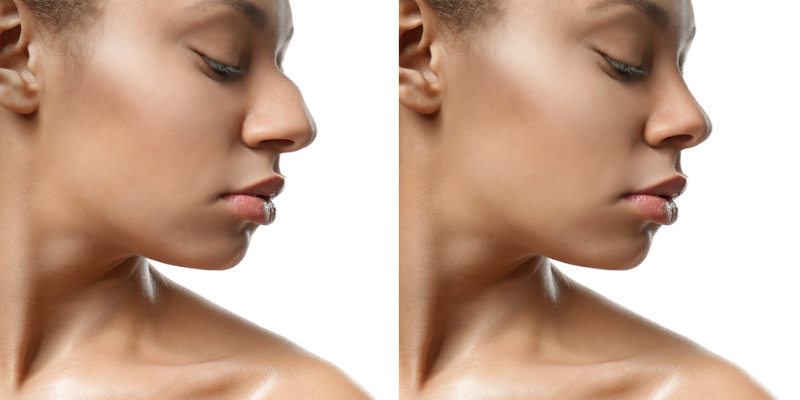How Long Is Rhinoplasty Recovery?
How long is rhinoplasty recovery? Patients want to know more about the Recovery Time For Rhinoplasty procedure as a whole. How does rhinoplasty feel and look after a few days, weeks, months, or even years? After a rhinoplasty, the person can start healing right away at home. The bruises will become less noticeable every day. The swelling will keep going down. Remember that the bridge and upper parts of the nose will grow less quickly because the skin is thinner there. Because the swelling at the nose tip needs to go down after it goes down at the bridge, it will take a little longer. The amount of work needed to make the tip of the nose bigger and the thickness of the skin are also things to think about.
Most people have swelling after rhinoplasty, and how fast it goes away depends on how hard the surgery was. People with many broken noses, a deviated septum, or whose whole nose has to be taken apart and put back together again will have a little more swelling and bruising. Still, it disappears once more. We don’t need three or four weeks. Most of the time, it takes between 7 and 10 days. Every day, you look better.
Getting better after a rhinoplasty is pretty much the same as getting better after any other kind of body surgery. You don’t look bad after three or four weeks, but it takes 100 days, or three months, for that to happen. Remember that the nose stays in the best shape when it is not touched, rubbed, or taped up. The best way to help nature heal is to leave it alone.
How Long Is Rhinoplasty Recovery Time?
Most people get better in less than ten days after a rhinoplasty. There are other things to think about, like the type of rhinoplasty. For example, liquid rhinoplasty, which has no recovery time, is often used to make changes to the nose. A splint is often put on the outside of your nose for about five days to protect it. After five days, your nose will feel much better, and you’ll be able to do all of your normal things again, including working out.
The only rule is that you can’t play contact sports like rugby or soccer, where a nose injury could be very painful. After six weeks, the nose is firm and very hard, and the tissue has fused together. How long does it take for the nose to heal after a rhinoplasty? Normal recovery time is between 7 and 10 days, but it always varies from person to person.
First Week After Rhinoplasty
You can fix a deviated septum to help you breathe better, and you can get rid of turbinates to help with both breathing and allergy problems. So, there will probably be a bit more swelling and bruising, but 10 days is often the golden rule for looking good and being able to go back to your normal activities. This means that you had both the breathing procedure and the rhinoplasty on the outside of your nose.
After 10 days, it’s not likely that you’ll have any big problems. Even if you have a few small bruises, you can still go out in public with a little make-up.
Making an effort to look real is part of a daily routine. The swelling keeps going down. Most of the time, it tastes best on the second day. How quickly you get better after a rhinoplasty will depend on how well you take care of yourself. This is clear because there are no bumps or swellings.
How Long Does Bruising Take To Fade?
Bruises usually go away quickly after surgery on the nose. For someone who is just getting rhinoplasty surgery, there might not be much. There could be more if the surgery was done to fix a broken nose in addition to making the nose look better. It usually only lasts five, six, or seven days and then quickly goes away. Each person has unique circumstances. No one ever has the same problems. Some people just hurt themselves more often than others. One thing you can always count on in nature is that wounds will heal.
Platelet-rich plasma is often used with steroid injections to speed up healing, reduce swelling and bruises, and do other things. It is also given through an IV along with other medicines before surgery to stop bleeding that night and the next morning.Plasma is the liquid that is left in the blood after the red blood cells have been taken out. Anesthesiologists take two ounces (60cc) of blood from the intravenous line after putting the patient to sleep during rhinoplasty.
Most medical insurance does not cover procedures for cosmetic surgery. But if a procedure is judged to be medically necessary, health insurance may pay for some or all of it. A rhinoplasty that changes the size or shape of the nose is considered a cosmetic procedure, so health insurance won’t pay for it.


